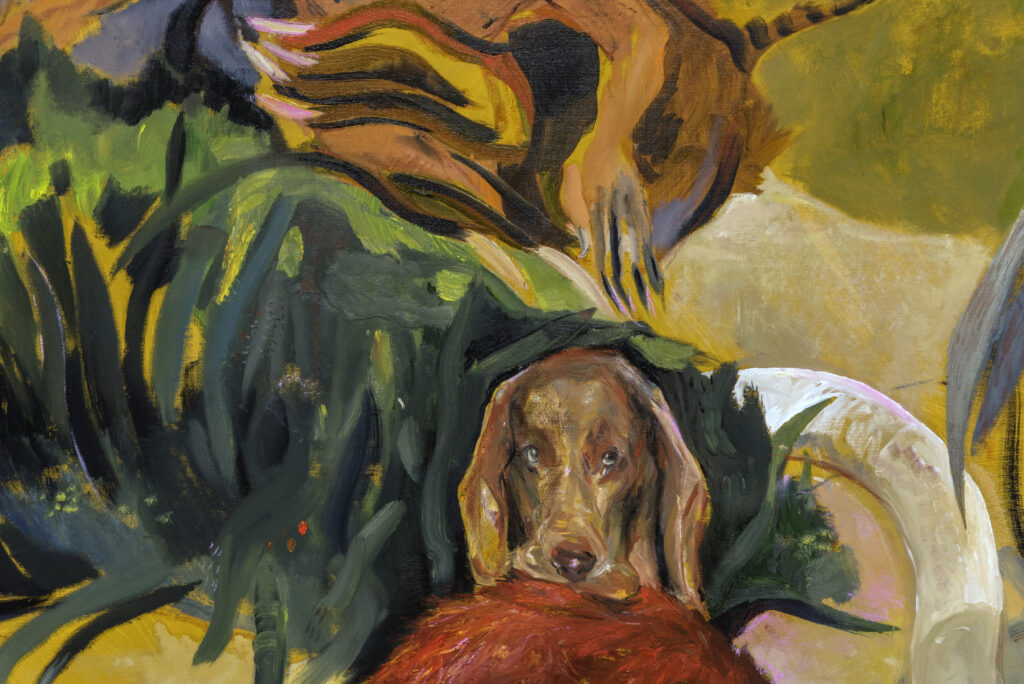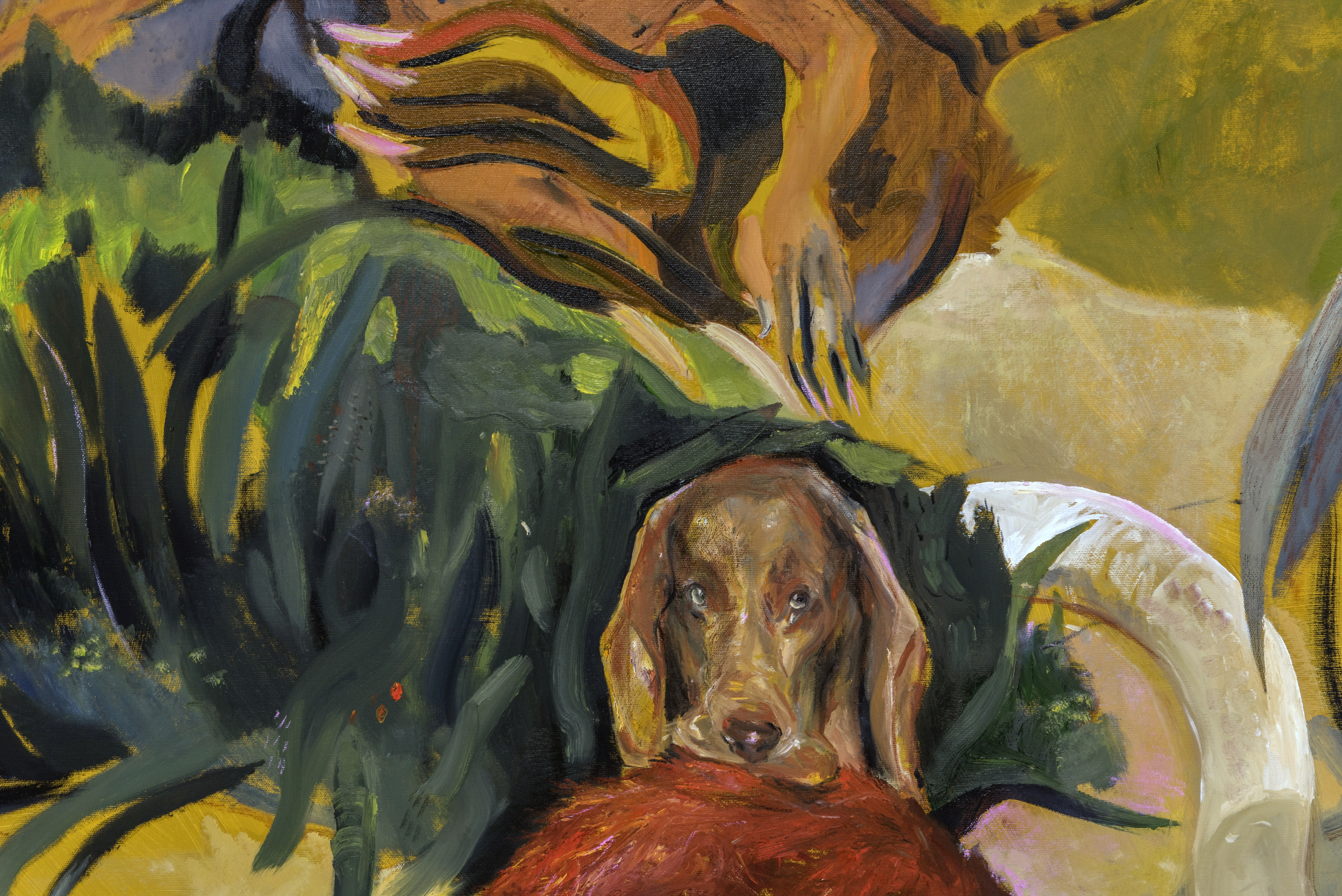Artists: Dona Arnakis, Mathias Bar, Cătălin Bătrânu, Szilard Gaspar, George Roșu, Sergiu Sas
Exhibition title: GAME ON
Curator: Mirela Vlăduți
Venue: META Spațiu, Timișoara, Romania
Photos: ©Cătălin Bătrânu & Josepha Blanchet/ all images copyright and courtesy of the artists and META Spațiu gallery
“GAME ON” exhibition, currently on view at META Spațiu contemporary art gallery in Timișoara (Romania), curated by Mirela Vlăduți, explores the concept of competition, the relationship between art and sport, aesthetics and aggression, rules and chaos. Power is the central determinant of the complex processes that underlie the discourse of tension and rivalry, the kind of power that Michel Foucault states has a dual, apparently antagonistic but essentially identical and simultaneous function: to punish and to heal or educate (Discipline & Punish: The Birth of the Prison, 1979). Even though sport/competition and the world of arts may not seem to have much in common, in practice the capitalist system constructs a complex system of power relations impacting all fields.





Since ancient times, the relationship between art and sport has been inseparable. In the attempt to find the perfect form of the human body, since ancient times, artists have appealed to the athletic body (whether we are talking about the body of Sisyphus outlined in the many absurd attempts – to which he is condemned by the gods – to push a huge rock forever, which once reached the top, rolled down again and the cazna was resumed, by Myron’s Discoball etc). Another important factor in this intersection of these domains is the function most engaged when we come into contact with them, namely the gaze.
What do all games have in common? Could it be the competition? Or the fact that it provides a source of entertainment? At the beginning of the last century, the Austrian philosopher Ludwig Wittgenstein posed this problem and analyzed how the playful aspect, approached aesthetically, is defined by uncertain limits, opens a possibility for dialogue and perspective projection of the individual, according to his own experiences and limitations.
These types of questions and challenges can be found in the works of the artists Dona Arnakis, Mathias Bar, Cătălin Bătrânu, Szilard Gaspar, George Roșu, Sergiu Sas.




Dona Arnakis’s practice is focused on the limit of immediate reality and psychology and can be found throughout her oeuvre. Her practice is based on correlations between objects, the surrounding nature and phenomena, events, people, mental structures in life. Many times, these elements are repeated, keeping their previous meaning or acquiring another meaning. Her site specific intervention is related to interspecific and intraspecific competition. The drawings mostly allude to certain human typologies and the tendency of some to dominate their own species, but also other species. Eliminating the “less strong and capable” by not giving them chances.
The pictorial substance of Mathias Bar’s paintings, whether it’s emphasized with the help of a chiaroscuro contrast or a chromatic one, is put at the service of representing some bodily details that evoke the tragic in a subtle and subversive manner. The compositions evoke a projection of a grotesque society, in which visual metaphors suggest particular associations with the concept of duality – deception/wisdom, devil/angel, positive/negative, prey/predator.



Cătălin Bătrănu’s sculpture depicting a rock in a hyperrealistic manner appears as a double, mnemonic imagee that does not aim to represent the real at all, though it might take a figurative form – in this case. While his research focuses on the way in which the mind constructs itself based on this reality, it is more the representation of this construction that is at play in his creations. Without seeking to represent or reproduce, these objects are imperfect doubles, made from memory.





Szilard Gaspar’s artworks explore, in a conceptual manner, one of the recurring themes of his artistic practice: power and matter, by reflecting on the aesthetics and the composition. Understood as an extension of the mind and intention, his sculptures and photographs represents the agency of the body in the creative process. With manual outputs, the hand becomes both the creative agent and the first intermediary between the matter and the finished product. His experimental approach to roles, human behaviors in conjunction with the malleability of matter (whether we are talking about the human body or the clay that the artist often uses in his works), becomes cathartic for the participants/viewers – a cumulation that provokes emotions and stimulates the imagination to reconsider everyday challenges.



George Roșu presents a series of artworks that examine the concept of competition and game, of winning and losing, by joining concepts and fields and putting them to a seemingly absurd competition. It invites the viewer not to score, but to become aware of the contest concept and identify it in personal everyday situations, touching on broad themes such as education, psychology and culture. George Roșu uses words as his working medium and their outline as a support. He considers that humor should have its place in the History of art, and he makes use of it in his work, may it be drawings, images or video fragments.


Sergiu Sas participates in the exhibition with two artworks that draw a connection between art and sport, a story-video that explores “the desacralization” of the monumental complex of Constantin Brâncuși in Târgu Jiu by a performative act involving various games (like backgammon or footbal) and a photograph depicting a ball – as a symbol of competition-, which is circumscribed by a covering of seeds – a unifying element, the seeds being used by the supporters of any football team.
